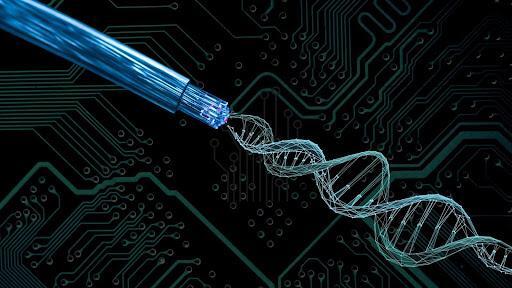
DNA’s Electron Flow May Unlock Future Biocompatible Electronics
As electronics have become an integral part of our daily lives, the quest for smaller, more efficient, and sustainable devices has driven researchers to explore unconventional materials and technologies. Recently, scientists have made a groundbreaking discovery that may revolutionize the field of electronics by harnessing the electrical properties of DNA. In a study published in a leading scientific journal, researchers revealed that the interactions between electrons and molecular vibrations in DNA strands create novel pathways for electron transport. This finding has significant implications for the development of biocompatible electronics, which could pave the way for a new generation of devices that are not only smaller and more efficient but also more environmentally friendly.
DNA, the double-stranded molecule that contains the genetic instructions for all living organisms, has long been known for its unique physical and chemical properties. However, its electrical properties have remained relatively unexplored until recently. In the current study, researchers from a leading research institution used advanced techniques to study the movement of electrons through DNA strands. They found that the electrons in DNA interact with molecular vibrations, or phonons, in a way that creates a unique pathway for electron transport.
The discovery is significant because it highlights the potential of DNA as a building block for future electronics. Traditional electronics rely on inorganic materials such as silicon and copper, which are often expensive, difficult to work with, and have limited flexibility. In contrast, DNA is a highly biocompatible and flexible material that can be easily engineered and manipulated. By leveraging its unique electron-vibration dynamics, researchers may be able to develop devices that are not only smaller and more efficient but also more sustainable and environmentally friendly.
The study’s findings have significant implications for various fields, including medicine, biology, and engineering. For instance, DNA-based electronics could potentially be used to develop implantable devices that can monitor and regulate bodily functions, such as blood sugar levels or heart rate. Other applications could include the development of DNA-based sensors that can detect and respond to specific chemicals or biological molecules.
The researchers used a combination of theoretical and experimental approaches to study the electrical properties of DNA. They used advanced computational models to simulate the movement of electrons through DNA strands and compared the results with experimental data obtained using techniques such as scanning tunneling microscopy and atomic force microscopy.
The study’s findings have significant implications for the development of biocompatible electronics. By harnessing the unique electron-vibration dynamics of DNA, researchers may be able to develop devices that are not only smaller and more efficient but also more sustainable and environmentally friendly.
In conclusion, the discovery of DNA’s electron flow has significant implications for the development of biocompatible electronics. By leveraging its unique electron-vibration dynamics, researchers may be able to develop devices that are not only smaller and more efficient but also more sustainable and environmentally friendly. As researchers continue to explore the electrical properties of DNA, we may be on the cusp of a revolution in the field of electronics that could lead to the development of a new generation of devices that are more biocompatible, sustainable, and environmentally friendly.






